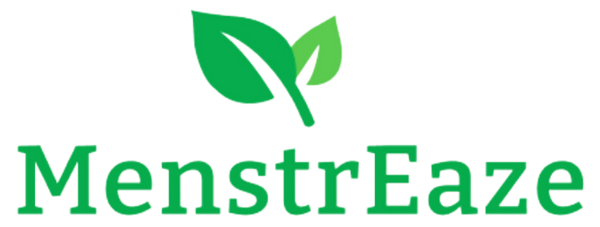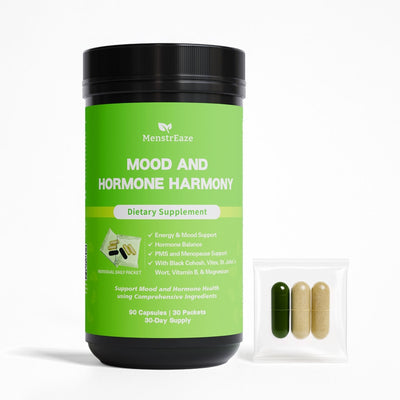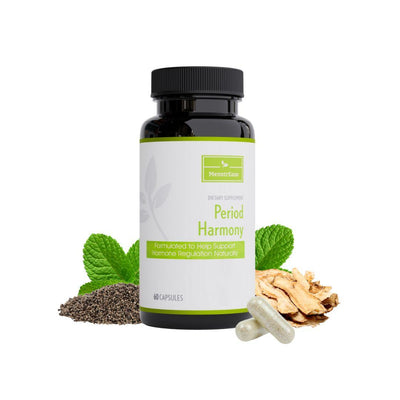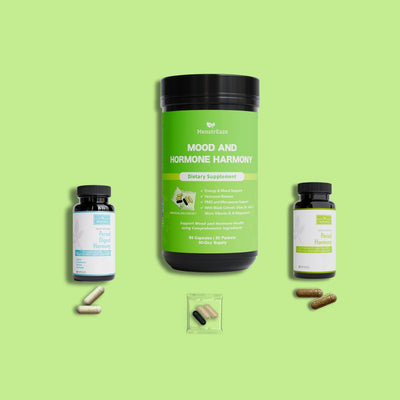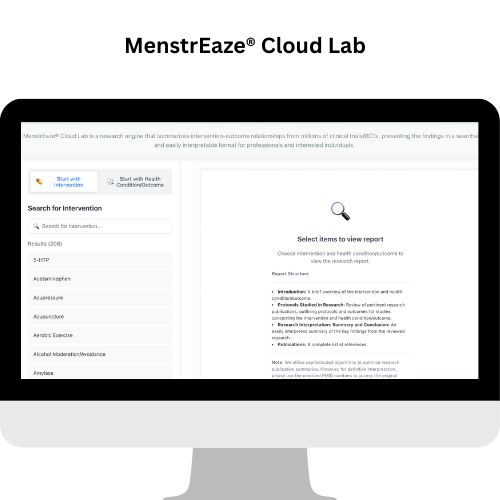Menopause is a natural biological process marking the end of a woman's reproductive years. While a universal experience, its transition can bring a range of challenging symptoms, including hot flashes, night sweats, mood swings, and sleep disturbances. These symptoms, often referred to as vasomotor symptoms, can significantly impact quality of life. For those seeking alternatives to conventional hormone replacement therapy, natural compounds have garnered considerable interest. Among these, soy isoflavones for menopause have emerged as a prominent area of research, offering a plant-based approach to managing menopausal discomfort.
This comprehensive guide delves into the science behind soy isoflavones, exploring how these powerful plant compounds may support women navigating the menopausal transition, with a particular focus on hot flash alleviation and overall well-being. We will examine the evidence, discuss recommended dosages, and address common questions regarding their safety and efficacy.
Understanding Soy Isoflavones: Nature's Phytoestrogens
Isoflavones are naturally occurring compounds found in various plants, with soybeans and soy-derived foods being particularly rich sources [2]. These diphenolic molecules are classified as phytoestrogens due to their structural similarity to human estrogen. This similarity allows them to interact with estrogen receptors (ERs) in the body, although their binding preference and effects differ from endogenous estrogen. Specifically, isoflavones preferentially bind to estrogen receptor beta (ERβ) compared to estrogen receptor alpha (ERα), providing a conceptual basis for their classification as selective estrogen receptor modulators (SERMs) [2]. This unique interaction is thought to be key to their potential benefits in menopausal symptom management.
The primary isoflavones found in soy include genistein, daidzein, and glycitein. Once consumed, these compounds can be metabolized in the gut, with daidzein being converted into S-equol by certain gut bacteria. S-equol is of particular interest because it is believed to be more potent and bioavailable than its precursor and has been extensively studied for its health benefits [4], [8], [10].
Benefits of Soy Isoflavones for Menopause Symptom Relief
Research into the benefits of soy isoflavones for menopause has expanded significantly, moving beyond initial interests in cancer prevention to include areas such as cardiovascular disease, bone health, cognitive function, and crucially, vasomotor symptoms of menopause [2]. While some studies have yielded inconsistent data, this is often attributed to factors such as small sample sizes, short study durations, and marked interindividual differences in isoflavone metabolism [2].
Alleviating Hot Flashes and Vasomotor Symptoms
One of the most compelling reasons women consider soy isoflavones for menopause is their potential to reduce the frequency and severity of hot flashes. A randomized, double-blind, placebo-controlled clinical trial investigating a combination supplement including soy isoflavones observed significant improvements across all Menopause Rating Scale (MRS) domains, including somatic symptoms (which encompass hot flashes and sweating) [3]. The study reported a 54.3% reduction in somatic symptoms in the treatment group compared to placebo [3]. Furthermore, animal studies using fermented soybean powder containing S-equol have also shown promise in alleviating hot flashes in ovariectomized rats, suggesting a potential mechanism through the downregulation of calcitonin gene-related peptide levels in the hypothalamus, which are linked to hot flashes [4].
However, it is important to note that a systematic review and meta-analysis of randomized controlled trials concluded that while soy isoflavones had no statistically significant effect on overall menopausal symptoms (including vasomotor, psychosocial, physical, sexual, and urogenital complaints) in climacteric women, they did show a significant reduction in depression levels [9]. This highlights the varied responses and the need for personalized approaches, acknowledging that not all women may experience the same degree of relief from vasomotor symptoms.
Supporting Bone Health and Preventing Osteoporosis
Menopause is associated with a significant decline in bone mineral density, increasing the risk of osteoporosis and fractures. Phytoestrogens, particularly those derived from soy and red clover, have been explored for their potential role in improving bone health. Clinical trials have examined their effects on bone mineral density (BMD) and bone turnover markers. While results regarding their impact on BMD are inconsistent, with some trials showing positive effects and others no significant difference compared to placebo, some studies suggest they may help improve bone health and reduce fracture risk [1]. For instance, S-equol, a metabolite of soy isoflavones, has been shown to reduce osteoporosis in estrogen-deficient mice and ameliorate menopausal osteoarthritis in rats by reducing oxidative stress and cartilage degradation [8]. In ovariectomized rat models, S-equol has also been observed to stabilize bone-formation markers and increase serum bone-turnover biomarkers [4].
Other Potential Health Benefits
- Mood and Depression: Beyond physical symptoms, menopausal women often experience psychological changes. As noted, a meta-analysis indicated that soy isoflavones significantly reduced levels of depression in climacteric women [9].
- Oral Health: A unique application of S-equol supplementation has been observed in improving desquamative gingivitis (DG), a condition often prevalent in pre- and postmenopausal women. A 12-month daily intake of 10 mg equol supplement led to statistically significant improvements in bleeding on probing, visual findings, and reductions in the frequency and severity of gingival pain [10].
- Metabolic Changes: In animal models, S-equol has shown potential to alleviate lipid metabolism changes associated with postmenopause [4].
- Breast Cancer Context: While concerns about isoflavones and breast cancer have arisen, primarily from rodent studies and presumed estrogenic effects, recent work challenges the traditional view of their estrogenicity [2]. In fact, genistein, a soy-derived isoflavone, has shown promise in breast cancer prevention and treatment by modulating estrogen receptor beta (ERβ), inhibiting angiogenesis, and inducing apoptosis [5]. It can also mitigate the adverse effects of obesity on breast cancer by modulating the tumor microenvironment [6]. The effects can be age-dependent, underscoring the potential for personalized therapies [5].
Safety Profile and Considerations
Concerns about the safety of soy isoflavones, particularly regarding their estrogenic effects, have largely been refuted by intervention and population studies [2]. A systematic review and meta-analysis of randomized controlled trials specifically examined the effect of soy isoflavones on measures of estrogenicity in postmenopausal women. This comprehensive analysis, which included 40 trials, found no statistically significant effect on endometrial thickness (ET), vaginal maturation index (VMI), follicle-stimulating hormone (FSH), or estradiol levels [7]. This finding is crucial as it addresses previous concerns about potential adverse effects on estrogen-sensitive tissues.
Furthermore, clinical trials assessing combinations of supplements including soy isoflavones have reported minimal and transient adverse events, none of which required cessation of supplementation [3]. While the benefits of soy isoflavones are promising, it's important to remember that personalized approaches to supplementation are necessary to establish their clinical benefits and minimize risks, considering individual patient characteristics such as genetics, metabolism, and lifestyle factors [1].
Introduce Period & Mood Harmony: Your Ally for Hormonal Balance
If you're looking for a comprehensive solution that includes the benefits of Soy Isoflavones along with other targeted ingredients for hormonal balance, consider Period & Mood Harmony: Mood and Hormone Support.
This scientifically formulated supplement offers comprehensive hormone support for perimenopause, menopause, and PMS relief with clinically-proven ingredients.
Triple-Action Benefits:
- Hot Flash & Night Sweat Relief: With ingredients like Soy Isoflavones along with Black Cohosh and Red Clover.
- Mood & Stress Balance: Includes GABA and 5-HTP to support a calm mind and better sleep.
- Energy & Sleep Enhancement: Provides essential B Vitamins, Magnesium, and Calcium.
Why It Works:
- Hormone & Menopause Support: Uses a blend of traditional botanicals.
- Stress & Mood Modulation: Directly addresses mood and sleep challenges with 5-HTP and GABA.
- Nutrient Foundation: Essential vitamins and minerals for overall well-being.


Period & Mood Harmony is manufactured in an FDA-Registered Facility in the USA and is third-party lab tested for purity and potency. It comes in a convenient 30-day supply of daily packets. Many users report changes within 3 weeks, with optimal results typically seen in 2-3 months.


